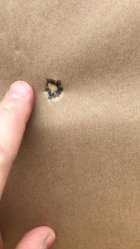Tuners work, there is no question of that. You can easily see the results of twirling the tuner on group size, even at a distance of only 100 yd. You'll generally find a much larger percentage of F-Open shooter using them than F-TR shooters, although they seem to be catching on a little more in F-TR recently.
As to your question regarding how much benefit they provide, that is another question entirely, and depends to some extent on the specific discipline in which it is being used. In F-Class, we shoot relatively long strings of fire (25+ shots), over a time period of anywhere from 5 or 6 minutes, up to as long as 20+ minutes. If there is much wind, it really becomes the limiting factor in terms of score during such a long period. If you badly miss a wind call and it puts your shot 3 to 5 MOA out of the X-ring, the gain you achieved by shrinking your groups from 0.3 MOA (without the tuner) to 0.2 MOA (with the tuner) at 100 yd becomes negligible. The gain from using the tuner in that scenario is simply much smaller than the effect of wind deflection. In a different discipline such as 1000 yd BR, group size is everything, and the shots are often fired as rapidly as possible to minimize the effect of external conditions. In that scenario, a tuner can easily make the difference between winning, and coming in near the bottom of the pack.
Another thing to consider is the actual quantification of any gains you might realize by using a tuner. Only over time can such gains be reliably quantified, which means means comparing scores without and with the tuner over some period of time. One reason you don't seem much empirical data regarding your question is that not a lot of people are willing to make such a detailed and rigorous comparison over a long period of time. We know tuners can visibly shrink groups even at distances of only 100 yd, so the [correct] assumption is made that that holds true at longer distances as well. For that reason, many simply make the decision to buy the tuner or not, then go with whatever their choice was. In other words, they may not have sufficient evidence to make a solid apples-to-apples comparison of the type you seem to be asking for.
FWIW - I have tuners on a couple of my F-TR rifles. I cannot tell you with any certainty that their use has made any difference in my scores over time. They definitely require a little more effort in terms of load development and use. Because I know that a properly set tuner will visibly shrink groups, I have made the working assumption that a tuner would also be of benefit during competition, at least some of the time, which is probably a fair conclusion. I think it is even more reasonable to conclude that they have not hurt my scores in any way, even if it is difficult to state with any reliability that their use has actually improved my scores. One thing I would caution you about tuners is that you can easily set the tuner to visibly shrink groups with any load you wish. A load does not have to be optimized in any way to see the effect of properly setting the tuner. However, setting the tuner to shrink groups with an un-tuned and sub-optimal load is never a substitute for proper load development. That is why most people go through their full load development procedure, only setting the tuner after the tuned load is finalized. I would also suggest that it is wise to record the groups when going through the tuner setting procedure, and keep that information handy. You will likely observe groups going from round to tall to wide (although not necessarily in that exact order) as you scroll through the tuner settings. This information can be useful in knowing which direction you might want to tweak your tuner setting as conditions change from match to match, or even during a given day. If you haven't tested and don't know which direction to turn the tuner to properly adjust it during a match, you're probably better off not turning it at all until you do. Again, this requires a bit more effort on the part of the shooter if they decide to go with a tuner.











